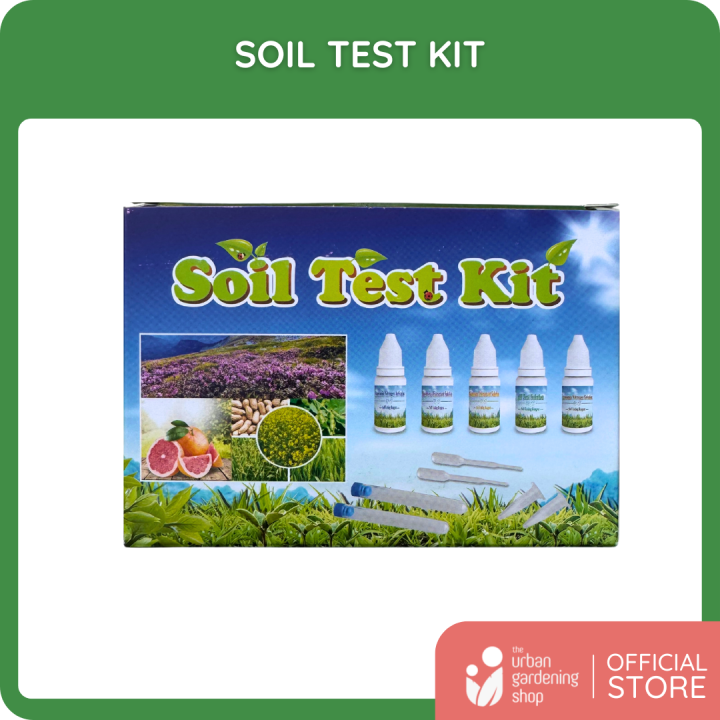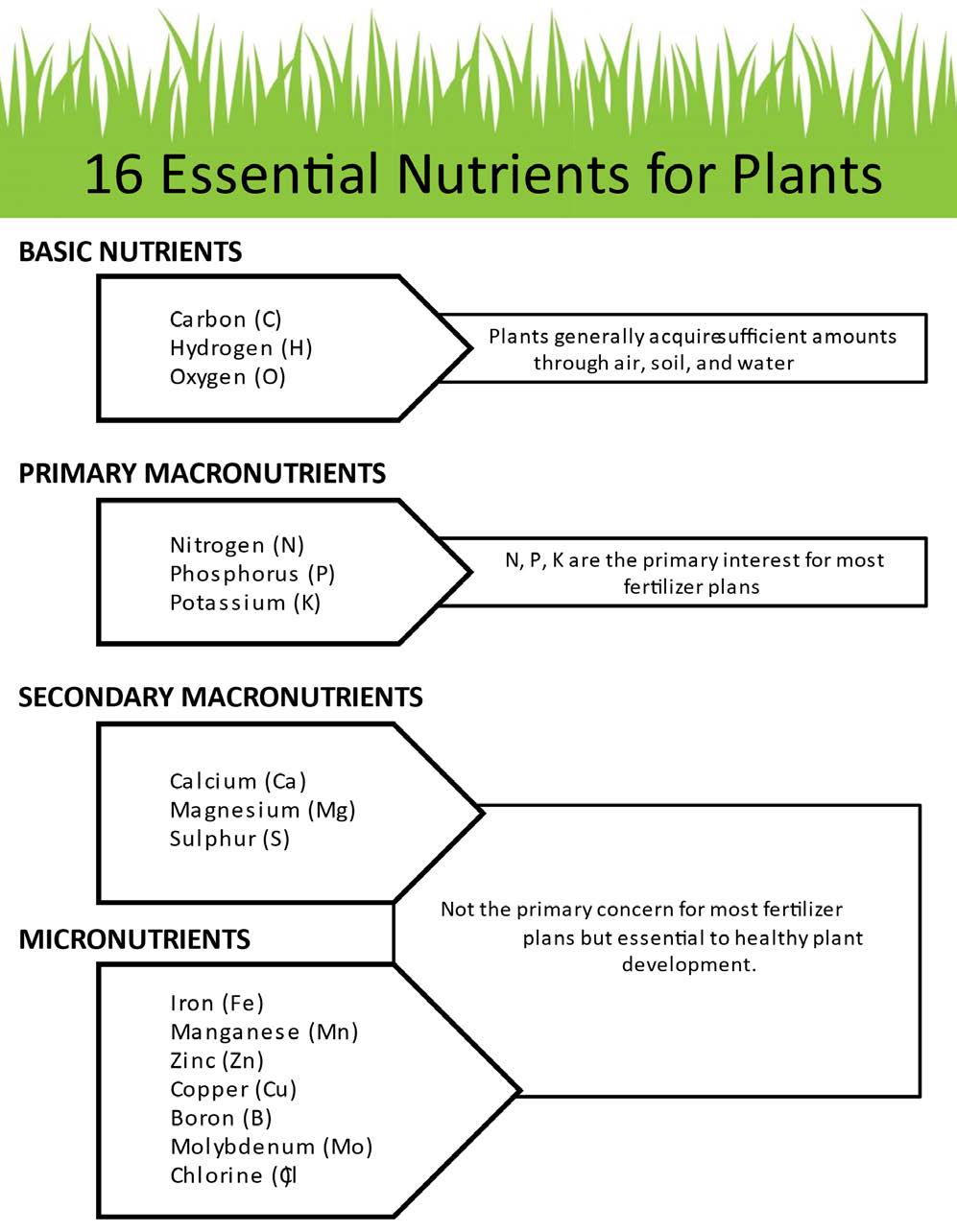Have you ever wondered why your lawn isn’t as lush and green as you’d like it to be, despite your best efforts? The secret might be hiding right under your feet.
Testing your lawn soil for nitrogen could be the missing piece in your quest for that perfect, vibrant lawn. Nitrogen plays a crucial role in the health and growth of your grass, and knowing its level in your soil can make all the difference.
Imagine having the power to transform your lawn by simply understanding its needs better. By the end of this article, you’ll discover how testing your soil can lead to a more beautiful and thriving lawn, saving you time, effort, and even money. Plus, you’ll gain insights into why this simple test can be your lawn’s best friend. So, are you ready to unlock the secrets buried in your soil? Let’s dig deeper into why testing for nitrogen might be the game-changer you’ve been looking for.

Credit: m-grill.com
Contents
Importance Of Soil Testing
Testing your lawn soil is essential for healthy grass growth. Soil testing reveals nutrient levels, including nitrogen, necessary for plant health. Understanding soil composition helps in creating effective fertilization plans. Proper nutrient management can improve lawn appearance and prevent issues.
Why Test Soil For Nitrogen?
Nitrogen is vital for grass development and color. Testing ensures your lawn gets the right amount. Too much nitrogen can lead to excessive growth and vulnerability to disease. Too little can cause yellowing and poor growth. Soil testing guides you in applying the right nitrogen levels.
Benefits Of Regular Soil Testing
Regular soil testing helps maintain lawn health. It allows adjustments in fertilization based on accurate data. This prevents over-fertilization, saving money and protecting the environment. Testing also helps identify other nutrient deficiencies. It ensures a well-balanced soil condition for your lawn.
Soil Testing Techniques
Several methods exist for soil testing. Kits are available for home use. They provide basic nutrient information. Professional testing services offer detailed analysis. These services deliver comprehensive soil reports. Choose the method that suits your needs and budget.
Understanding Soil Test Results
Interpreting soil test results is crucial. Results show nutrient levels and pH balance. They help in planning fertilization and soil amendments. Experts can assist in understanding complex reports. Ensure you follow recommendations for optimal lawn care.
Role Of Nitrogen In Lawn Health
Nitrogen plays a vital role in maintaining a healthy lawn. It serves as a key nutrient necessary for lush, green growth. Understanding nitrogen’s impact on your lawn can guide effective care practices. Testing soil for nitrogen levels ensures your lawn receives what it needs.
Role Of Nitrogen In Lawn Growth
Nitrogen is crucial for grass growth and color. It fuels the process of photosynthesis, which allows grass to convert sunlight into energy. This energy supports the development of strong, vibrant blades.
Impact Of Nitrogen Deficiency
Without enough nitrogen, grass may turn yellow or pale. It can become weak and thin, making it susceptible to diseases. A nitrogen-deficient lawn struggles to recover from stress.
Benefits Of Adequate Nitrogen Levels
Proper nitrogen levels result in a dense, healthy lawn. It enhances the lawn’s ability to resist pests and diseases. A well-nourished lawn can endure foot traffic and environmental stresses.
Testing Lawn Soil For Nitrogen
Soil testing identifies if your lawn lacks nitrogen. It guides you in applying the right amount of fertilizer. This approach prevents over-fertilization, which can harm the environment.
Indicators Of Nitrogen Deficiency
Is your lawn looking less vibrant? It might be a nitrogen deficiency. This essential nutrient plays a vital role in plant growth. Without it, grass struggles to thrive. Recognizing the signs early can help restore your lawn’s health. Let’s explore the key indicators of nitrogen deficiency.
Yellowing Grass
One of the first signs is yellowing grass. Healthy grass is rich green. A lack of nitrogen turns it yellow. This change begins at the tips. It then spreads towards the base. Keep an eye out for this telltale sign.
Slow Growth
Grass growth slows without enough nitrogen. You may notice your lawn isn’t growing as quickly. This stunted growth can lead to thinning. Regular mowing becomes less frequent. Your once lush lawn appears sparse.
Weed Invasion
Weeds take advantage of weak grass. A nitrogen-poor lawn offers them a perfect opportunity. They outcompete your grass for resources. This results in a patchy, uneven lawn. Watch for an increase in unwanted invaders.
Pale Green Color
In addition to yellowing, grass may turn a pale green. This is a less obvious sign. It indicates your lawn is stressed. The lack of a rich green hue points to nutrient issues. Keep an eye on color changes.
Reduced Disease Resistance
Grass low in nitrogen struggles to fight diseases. It becomes more susceptible to pests and infections. This can further weaken your lawn. A healthy nitrogen level helps build resilience. Notice any increase in disease presence.

Credit: m-grill.com
Benefits Of Testing Lawn Soil
Testing lawn soil for nitrogen ensures grass grows strong and healthy. It identifies nutrient needs, preventing over-fertilization. This leads to lush, green lawns and saves money on unnecessary products.
Testing lawn soil for nitrogen may seem like a tedious task, but the benefits it offers can profoundly impact your lawn’s health and appearance. Imagine stepping onto a lush, green carpet of grass that feels soft underfoot. Achieving this dream lawn starts with understanding what’s beneath it—your soil.Understanding Nutrient Needs
Testing your lawn soil allows you to understand its specific nutrient needs. Not all lawns require the same care. Yours might need more nitrogen, while your neighbor’s might be lacking in potassium. By testing, you learn exactly what your lawn craves, enabling you to tailor your care routine for optimal growth.Improved Lawn Health
Healthy lawns aren’t just about appearance; they’re about resilience. A lawn that’s fed the right nutrients can withstand pests, diseases, and even drought. When you know your soil’s nitrogen levels, you can adjust your fertilization strategy to promote deeper root growth. This results in a lawn that stands strong against challenges.Cost-effective Lawn Care
Ever bought fertilizer only to see minimal results? Testing soil can prevent this costly mistake. By pinpointing the exact deficiencies, you avoid overspending on unnecessary products. Investing in a soil test can save you money in the long run, ensuring every dollar spent directly benefits your lawn.Environmental Impact
Excessive use of fertilizers can harm the environment. Knowing your soil’s exact needs helps you apply only what’s necessary, reducing runoff into waterways. This responsible approach not only benefits your lawn but also contributes to a healthier planet.Personal Experience: A Game-changer
I once thought my lawn was beyond saving due to its patchy appearance. After testing the soil, I discovered it was severely lacking in nitrogen. With the right adjustments, my lawn transformed within weeks. If I hadn’t tested the soil, I’d still be fighting a losing battle. Have you ever wondered what hidden potential lies beneath your lawn? Testing your soil might be the first step toward discovering it. Each lawn is unique, and understanding its needs can lead to a thriving outdoor space.Methods For Testing Soil Nitrogen Levels
Testing lawn soil for nitrogen is essential for healthy grass growth. Simple methods like soil tests help identify nitrogen deficiencies. Correct nitrogen levels ensure a vibrant, lush lawn.
Testing your lawn soil for nitrogen is crucial for maintaining a healthy and vibrant lawn. Nitrogen is one of the key nutrients that grass needs to grow lush and green. Without adequate nitrogen, your lawn can become thin and weak. But how do you know if your soil has the right amount of nitrogen? Let’s look at some effective methods to test your soil’s nitrogen levels.Home Test Kits
Home test kits are a convenient and cost-effective option for checking your soil’s nitrogen levels. These kits typically include test strips or capsules that react with the soil to indicate nitrogen content. Using a home test kit is simple. You mix a small soil sample with water and then immerse the test strip. Wait a few minutes for the strip to change color. The color will correspond to a nitrogen level chart provided with the kit. These kits are perfect for quick assessments and offer guidance on whether your lawn needs fertilization. However, they may not be as precise as professional testing.Professional Laboratory Testing
For more detailed analysis, professional laboratory testing is the way to go. This method involves sending a soil sample to a lab for comprehensive testing. Labs provide a detailed report on nitrogen levels, along with other soil nutrients. This gives you a complete picture of your soil’s health. The results can help you make informed decisions about fertilization and other lawn treatments. While it’s more expensive than home kits, it’s a smart investment for serious lawn enthusiasts. Choosing the right method depends on your needs and budget. Are you looking for a quick check, or do you need detailed insights to optimize your lawn care routine? The choice is yours, but remember, understanding your soil’s nitrogen levels is key to achieving the lawn of your dreams.Frequency Of Soil Testing
Testing lawn soil for nitrogen can ensure healthy grass growth. Nitrogen is vital for lush, green lawns. Regular soil checks help maintain nutrient balance.
Understanding the frequency of soil testing can make a significant difference in your lawn’s health. Regularly testing your lawn soil for nitrogen can save you from unnecessary fertilization and help maintain a lush, green lawn. But how often should you perform these tests to get the best results?Annual Testing For Optimal Results
Testing your lawn soil annually provides valuable insights into its nutrient profile. This yearly check-up ensures your soil has the right nitrogen levels to support healthy grass growth. You wouldn’t skip your annual health check-up, right? Your lawn deserves the same attention.Seasonal Considerations
The season can impact your testing schedule. Spring is often ideal since it’s the start of the growing season. Testing in spring helps you correct any deficiencies before your grass starts its growth spurt. Have you ever wondered why your lawn doesn’t look as vibrant in summer? A spring test might reveal the missing nitrogen.After Significant Changes
If you’ve recently added new plants, changed your lawn care routine, or experienced extreme weather, it’s wise to test your soil. These changes can alter the soil’s nutrient balance. Testing ensures you adjust your care to meet the new conditions.Signs Your Lawn Needs Immediate Testing
Pay attention to your lawn’s appearance. Is it yellowing or growing unevenly? These signs might indicate a nitrogen deficiency, suggesting an immediate soil test. Trust your instincts; your lawn communicates its needs if you know what to look for.Personal Experience: Learning From Mistakes
I once assumed my lawn only needed testing every few years. This mistake led to a patchy, dull lawn that required extensive care to revive. Regular testing would have prevented this issue, saving time and effort. How often do you test your lawn soil? Regular testing empowers you to make informed decisions about lawn care. It’s a small investment in time that pays off with a vibrant, healthy lawn.Interpreting Soil Test Results
Testing lawn soil for nitrogen can improve grass health. Nitrogen supports growth and green color. Regular checks ensure balanced nutrient levels for a healthy lawn.
Interpreting soil test results can seem overwhelming at first glance, but understanding them is crucial for a healthy lawn. Knowing how to read the levels of nitrogen and other nutrients helps you make informed decisions. This knowledge not only saves time and money but also ensures your lawn gets the right care it needs.Understanding Nitrogen Levels
Nitrogen is a key nutrient for grass growth. It’s like the fuel for your lawn, driving vibrant green color and lush growth. If your soil test shows low nitrogen levels, it’s a sign that your lawn might need a boost. You might wonder, how do you know if your lawn has enough nitrogen? Look for signs like yellowing grass or slow growth. These are indicators of nitrogen deficiency. By addressing these signs promptly, you can improve your lawn’s health significantly.Balancing Nutrients
Soil tests offer insights into the balance of nutrients in your lawn. It’s not just about nitrogen; other nutrients play crucial roles too. Proper balance among nitrogen, phosphorus, and potassium is essential for optimal growth. Imagine your lawn as a balanced diet; each nutrient contributes to its health. Just like you wouldn’t eat only carbs or proteins, your lawn needs a variety of nutrients. If your soil test reveals an imbalance, adjust your fertilization strategy to bring everything into harmony.Using Soil Test Kits
Soil test kits are handy tools that provide a snapshot of your lawn’s nutrient levels. They’re easy to use and affordable, making them accessible for anyone serious about lawn care. Have you ever used a soil test kit? They can be a game-changer. Simply collect samples from different parts of your lawn and follow the kit instructions. The results will guide you on what fertilizers to add and how much.Applying Results To Lawn Care
Now that you’ve interpreted the results, what’s next? Use them to tailor your lawn care routine. Whether it’s adding nitrogen-rich fertilizer or balancing nutrients, your actions will be based on concrete data. Think about the last time you adjusted your lawn care without knowing the exact needs. With soil test results, you eliminate guesswork, leading to better outcomes. Isn’t it fascinating how a simple test can transform your approach?Regular Testing
Testing soil isn’t a one-time task. Regular testing ensures your lawn stays healthy over time. As seasons change, so do the nutrient needs of your grass. Consider making soil testing a part of your annual lawn care routine. It’s like checking in on your lawn’s health. Regular updates help you stay ahead of potential issues, ensuring your lawn remains lush and vibrant. Have you ever thought about what your lawn truly needs? Soil testing might just be the tool you need to understand and meet those needs effectively.
Credit: www.amazon.com
Steps After Testing
Testing lawn soil for nitrogen is essential. After testing, adjust fertilization practices based on results. Proper nutrient balance promotes healthy grass growth.
Testing your lawn soil for nitrogen is a crucial step in understanding what your grass needs to thrive. But what do you do after you’ve got the results? Knowing how to interpret the findings and take action is vital for maintaining a healthy lawn. Let’s dive into the steps you should consider once you have your soil test results.Adjusting Fertilizer Use
When your soil test reveals low nitrogen levels, it’s time to adjust your fertilizer use. Choose a nitrogen-rich fertilizer to boost the nutrient levels in your soil. For example, a fertilizer with a higher first number in the N-P-K ratio is ideal. Apply it evenly across your lawn, ensuring you don’t overdo it, as too much nitrogen can harm your grass. Have you ever noticed your grass turning yellow despite regular watering? It might be due to too much nitrogen burning the roots. On the other hand, if nitrogen levels are adequate, reduce your fertilizer use. This not only saves money but also prevents unnecessary environmental impact. Consider opting for a slow-release fertilizer to maintain a steady nutrient supply without overwhelming your lawn.Improving Soil Quality
Improving soil quality goes beyond just adjusting fertilizer. Sometimes, low nitrogen levels can indicate poor soil health overall. One practical approach is to aerate your lawn. Aeration improves air and water circulation, allowing nutrients to penetrate deeper into the soil. Another step is to add organic matter like compost to enhance soil structure and nutrient content. Did you know that composting kitchen scraps can naturally enrich your lawn soil? It’s a sustainable way to boost nitrogen levels and improve soil texture. Consider planting nitrogen-fixing plants like clover to naturally increase nitrogen in the soil. These plants work symbiotically, enhancing your lawn’s health over time. Taking these actions can transform your lawn care routine. Have you tested your soil yet? What changes are you planning to make?Common Misconceptions
Testing lawn soil for nitrogen often brings many misconceptions to the table. These misunderstandings can lead you to skip or misinterpret the importance of soil testing. Let’s unpack these common misconceptions and see how they might affect your lawn care decisions.
Misconception 1: My Lawn Looks Healthy, So The Soil Must Be Fine
A lush green lawn doesn’t always mean your soil is in perfect condition. Sometimes, the nutrients present may only support short-term growth. You might think your grass is thriving, but without proper nitrogen levels, it could lose vigor over time. Have you ever noticed a sudden change in lawn health after a few seasons? Regular soil testing helps prevent these surprises.
Misconception 2: I Fertilize Regularly, So There’s No Need To Test
Regular fertilization is beneficial, but it doesn’t replace testing. Fertilizers vary, and their impact on soil differs based on current nitrogen levels. Testing allows you to adjust your fertilization strategy. Are you possibly over-fertilizing without knowing it? Soil testing gives you the data you need to make informed decisions.
Misconception 3: Soil Testing Is Too Complicated
Some believe soil testing is a complex process best left to experts. In reality, many local extension offices provide easy-to-follow kits. These kits simplify the process, making it accessible to anyone. Have you considered reaching out to local resources for a guide? You might find it easier than expected.
Misconception 4: Testing Is An Unnecessary Expense
Think of soil testing as an investment rather than an expense. Knowing your soil’s nitrogen levels can save you money on unnecessary fertilizers. It also helps you avoid the cost of repairing damaged lawns. Have you weighed the potential savings against the cost of testing? It might surprise you how economical it can be.
Understanding these misconceptions can change how you approach lawn care. Testing your soil gives you the knowledge needed for a vibrant, healthy lawn. Why not give it a try and see the difference it makes?
Frequently Asked Questions
How To Tell If Soil Needs Nitrogen?
Yellowing leaves and stunted growth often indicate a nitrogen deficiency in soil. Conduct a soil test to confirm. Nitrogen-poor soil can lead to reduced crop yields. Regularly monitor plant health to assess nutrient needs. Use organic or synthetic fertilizers to boost nitrogen levels effectively.
How To Tell If Grass Needs Nitrogen?
Yellowing grass or slow growth indicate a nitrogen deficiency. Weak, sparse blades and poor color are common signs. Test soil for confirmation and apply a nitrogen-rich fertilizer to restore health. Regularly monitor grass to ensure proper nutrient levels for vibrant growth.
Do I Need To Soil Test My Lawn?
Yes, soil testing is important for a healthy lawn. It identifies nutrient deficiencies and helps optimize fertilizer use. Testing ensures the right pH balance and supports sustainable lawn care practices. Conduct soil tests every few years for best results.
Why Is It Important To Test For Nitrogen In Soil?
Testing for nitrogen in soil ensures optimal plant growth. Nitrogen is crucial for photosynthesis and healthy foliage. It helps farmers maximize crop yields and minimize fertilizer waste. Proper nitrogen levels prevent environmental issues like water pollution. Regular testing guides effective soil management and sustainable farming practices.
Conclusion
Testing lawn soil for nitrogen ensures healthy grass growth. It helps identify nutrient needs and avoid over-fertilization. Proper nitrogen levels support lush, green lawns. Testing prevents wasting time and money on unnecessary treatments. Soil testing offers insight into the lawn’s health.
It reveals imbalances that might affect grass vitality. Regular checks maintain a vibrant and thriving lawn. Consider testing to achieve the best results for your grass. It’s a smart step toward a beautiful, healthy outdoor space. Prioritize soil health for a greener future.






